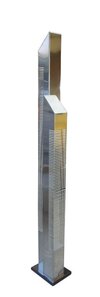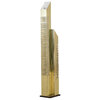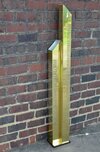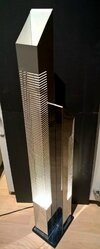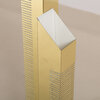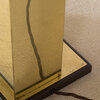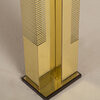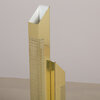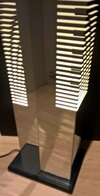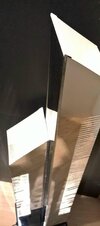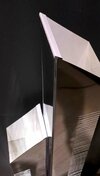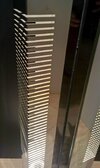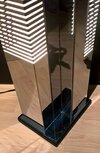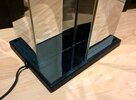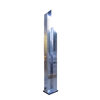knaving
New Member
I wish to make a set of Picard's lamps in his ready room.
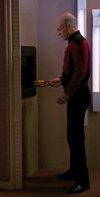
I've looked all around for a source or even a conversation about these lamps but I cannot find any information about them. They are a simple enough design but what's giving me pause are the diffuser covers. They appear to be what is referred to as a wrap-around diffuser used for covering fluorescent lights. That itself is easy enough to find, but that particular style of cover with the horizontal lines I cannot find (at least at the big box hardware store). There are suppliers of such covers, but the ones at the top of a google search have no way to search for styles.
My current plan for the build is to source the plastic covers from a local plastics store who can cut and bend a sheet. The closest they have to that style is a much narrower band of lines than what is seen on the set. It isn't ideal but it would work. I would be using LED fluorescent style lights, 2' and 3' long and the body would be bent sheet metal. Possibly aluminum, maybe stainless. I can't progress with the build until I figure out the light covers; if I source a legit diffuser, the build dimensions will be based on what I can find. Otherwise, I eyeball the sizes and have things custom cut for it.
Does anyone have any suggestions on how I could find something closer to what they used on set?
Also, as this build doesn't appear to be documented on the internet, I hope to be able to make a proper post with the completed build to help others make this pretty radical lamp.
This is my first post here, please direct me to a different forum location if I'm in the wrong place.

I've looked all around for a source or even a conversation about these lamps but I cannot find any information about them. They are a simple enough design but what's giving me pause are the diffuser covers. They appear to be what is referred to as a wrap-around diffuser used for covering fluorescent lights. That itself is easy enough to find, but that particular style of cover with the horizontal lines I cannot find (at least at the big box hardware store). There are suppliers of such covers, but the ones at the top of a google search have no way to search for styles.
My current plan for the build is to source the plastic covers from a local plastics store who can cut and bend a sheet. The closest they have to that style is a much narrower band of lines than what is seen on the set. It isn't ideal but it would work. I would be using LED fluorescent style lights, 2' and 3' long and the body would be bent sheet metal. Possibly aluminum, maybe stainless. I can't progress with the build until I figure out the light covers; if I source a legit diffuser, the build dimensions will be based on what I can find. Otherwise, I eyeball the sizes and have things custom cut for it.
Does anyone have any suggestions on how I could find something closer to what they used on set?
Also, as this build doesn't appear to be documented on the internet, I hope to be able to make a proper post with the completed build to help others make this pretty radical lamp.
This is my first post here, please direct me to a different forum location if I'm in the wrong place.
Last edited:


